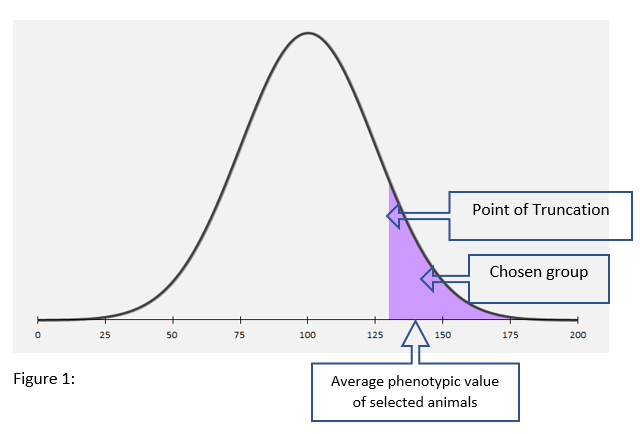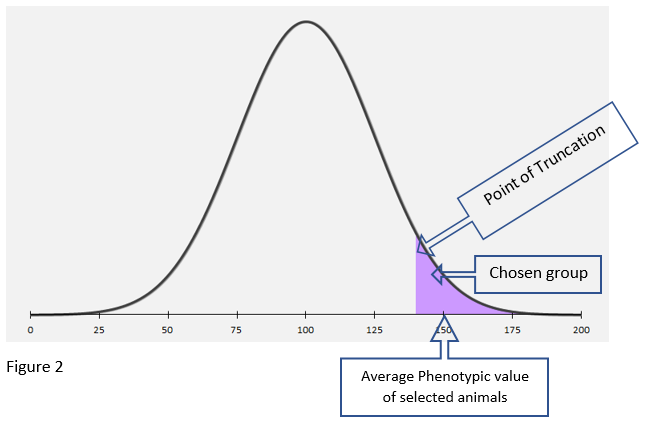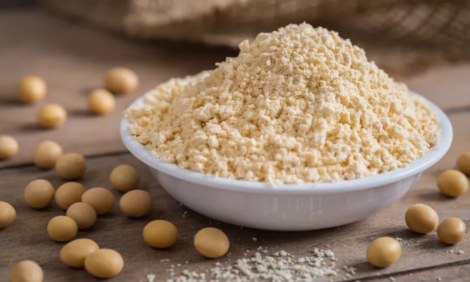



Selection Intensity and Genetic Improvement
CANADA - Animal breeding aims to improve livestock populations by utilizing the genetic differences among individuals, writes Dinesh Thekkoot, PhD, University of Alberta and Genesus Inc.Genetic improvement is achieved by selecting superior animals as parents, and this determines the genetic value of the next generation. The basic mechanism underlying this process is to increase the frequency of the favorable form of genes in the population, and to prevent genetically inferior animals from passing their unfavorable forms to next generations.
Genetic improvement per year from a breeding program depends on four key factors and is calculated as follows:
Where ∆G is the genetic improvement per year, i is the intensity of selection, r is the accuracy of selection, s_gis the genetic standard deviation of the trait under selection and L is the generation interval expressed in years.
The importance of accuracy of selection was described in detail in a previous article, which can be read here. In this report, we will discuss another factor - The intensity of selection
It is common in animal breeding to select animals by means of truncation, i.e. individuals are selected as parents only if their index values are higher than a certain cutoff value; the truncation point. Truncation selection results in a difference between the mean indexes of selected parents and the overall population mean, which is called Selection Differential (S). Selection differential is defined as the superiority of the selected parents over the population mean.
Where I ̅_selected is the mean index of the selected parents and I ̅_population the mean index of the population. The selection differential can be standardized by dividing it with standard deviation of the index (s_I ). The standardized selection differential is called selection intensity, and is expressed as i.
From the above equations, we can see that higher the selection differential, higher will be the genetic improvement (∆G).
Consider a population of pigs with a mean index value of 100 and standard deviation of 25 index points. While selecting from this population, we typically select from within the chosen group of pigs that fall above a certain index value, say 130. In this case 130 is called the truncation point. Figure 1, represents the distribution of this population, where the selected parents are indicated by the shaded region. The average index of the selected parents will be 142.2 and the selection differential in this scenario will be 42.2 (142.2 – 100).
In theory a larger selection differential will result in higher genetic improvement. Hence to increase selection differential, we need to move the truncation point further to the right of the distribution. This results in a higher selection differential, but a lower number of animals being selected as parents. Figure 2 demonstrates the scenario of moving the truncation point to 140 from 130 (Figure 1). Here the mean of the selected parents will increase to 150.6, but the proportion of animals selected goes down (indicated by the shaded region).
From equation 1 we can see that, higher the value of i, the bigger will be the genetic improvement per year. The value of i depends on the proportion of animals selected as parents. For example, when the proportion selected is 100, i.e. if we select the whole population, both the selection differential and the selection intensity will be zero, and there won’t be any genetic improvement. Conversely, if we select a very small proportion, say 0.01 per cent, (selecting 1 out of every 10,000 animals), the selection intensity will be 3.9, and the genetic improvement will be very large.
In general, to maximize the genetic improvement, breeding organizations need to keep the selection proportion as low as possible. But for smaller nucleus populations, higher selection intensity can result in higher inbreeding and thereby reduced genetic variance or standard deviation. From equation 1 we can see that reduced genetic standard deviation will reduce genetic improvement. Larger, well managed nucleus populations will have increased genetic variation. The best way to increase the selection intensity without any negative effects on genetic improvement is by increasing the nucleus population size. Genesus manages the world’s largest registered pure bred nucleus herd, and this large population helps to maintain very high selection intensity in our breeding program without any adverse effects, assuring the highest genetic response and maximum profitability to Genesus customers.













